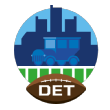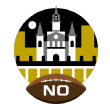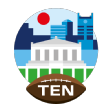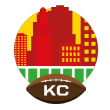[h=1]Keys to success for all 32 NFL teams[/h]Warren Sharp
Special to ESPN.com
ESPN INSIDER
When doing handicapping research prior to the season, there are always angles that stand out to explain prior performance and hopefully help to predict future outcomes. Some of these are good, some bad, but they all help to paint a picture of what's important for every NFL team.
What I've done below is pick out a couple of betting nuggets for all 32 NFL teams, which should help bettors as they prepare for the season.
[h=2]NFC East[/h]
 [h=3]Dallas Cowboys[/h]Winning without Romo: The Cowboys are 1-13 in the past five seasons without Tony Romo.
[h=3]Dallas Cowboys[/h]Winning without Romo: The Cowboys are 1-13 in the past five seasons without Tony Romo.
With him sidelined by a back injury, the task of winning without him falls to rookie Dak Prescott. Only two rookie QBs drafted since 1980 in the fourth round or later have posted a winning record in their rookie season starts.
Maximize Prescott: Prescott was an extremely successful runner in college. In the highly-touted SEC, only seven players had more rushing attempts the past two years (all were RBs), as Prescott had 370 rushing attempts for 1,574 yards and 24 rushing TDs at Mississippi State. The Cowboys would be wise to design plenty of runs or run options for Prescott; in the past five years, mobile rookie QBs have led teams to more wins in Year 1, and it hasn't been particularly close.

[h=3]New York Giants[/h]<offer style="box-sizing: border-box;"></offer>
Execute down the stretch: Teams that win the turnover battle have won 79 percent of those games since 1990, and teams that lead after three quarters historically win 82 percent of those games. The Giants won the turnover battle in nine games, but went 4-5 (44 percent) in those contents. They led after three quarters in nine games as well, but they went just 6-10, which was the worst result of any team in 2015 compared to average historical performance.
Improve red zone efficiency: The Giants were 27th in red zone efficiency last season, but in terms of successful play rate in the red zone, only 41 percent of their plays graded as successful. A lack of rushing productivity (31st with just 33 percent successful plays vs. the NFL average of 47 percent) forced them to pass the ball second most often (68 percent through three quarters). They need to feed a higher volume to Rashad Jennings in the red zone.

[h=3]Washington Redskins[/h]Feed Reed: Despite playing with a variety of subpar QBs, from Colt McCoy to Robert Griffin III, TE Jordan Reed has recorded a 78 percent catch rate when targeted within 15 yards of the line of scrimmage -- by far the best rate for any non-RB in the past 15 years. He's a nightmare matchup, and when targeted by Kirk Cousins in the first half (before opponents could make halftime adjustments) in opponent's territory, he caught 28 of 33 passes (85 percent) for 10 yards per attempt, seven TDs, zero INTs and delivered a 149 QB rating.
Need rushing production: Cousins had a great year, posting the NFL's second-best passer rating on first down, but it came against easy defenses. The Redskins tried to run the football often (ninth most in one-score games), but they got nothing out of the running game, which ranked dead last in efficiency. Unfortunately, the quality of the 2016 backfield is even less proven, but rushing production will be essential against a tougher schedule.

[h=3]Philadelphia Eagles[/h]Change is a good thing: New head coach Doug Pederson and offensive coordinator Frank Reich should really help this entire team calm down and improve its confidence. The slower pace on offense as compared to 2015 will allow the team to settle down and execute. It helped Sam Bradford tremendously in the preseason, and with Bradford gone to Minnesota, the Eagles hope it will help Carson Wentz in the regular season.
Save the defense: Every season under Chip Kelly, the Eagles' offense was the NFL's worst in time of possession. This, in turn, forced their defense to spend more time on the field than any other stop unit in the NFL. Pederson's slower pace should help the defense, but that really only lasts as far as Wentz's early-down performance goes. It is very rare for a rookie QB to perform well on third down, so the Eagles must put more emphasis on first- and second-down execution to keep the offense on schedule and the defense rested.
[h=2]NFC North[/h]

[h=3]Green Bay Packers[/h]Healthy Aaron Rodgers: Lost in the Rodgers hate last season was his fast start: In his first six games he led the NFL with a 116 rating (68 percent completions, 8.2 yards/attempt, 15 TDs and 2 INTs) against several very good pass defenses, including the Seahawks, Chiefs and Rams. And the Packers started 6-0. However, from Rodgers' Week 8 beating in Denver onward, something was clearly not right, as Rodgers averaged an 82 rating (57 percent completions and 6.0 yards/attempt). Rodgers' health (and his offseason surgery) may have been the least discussed part of the Packers struggles over the second half of the season.
Second-and-short efficiency: The easiest time to convert a first down is by running on second and short, but the Packers ranked just 26th in the NFL last year on second-and-short runs. This led to unnecessary third downs, and they ranked 28th in third-down conversions. Improvement in the short yardage running game would assist Green Bay's offense in a big way.

[h=3]Minnesota Vikings[/h]Play-calling balance: Norv Turner was very conservative on first down last year. In the first half, 69 percent of the Vikings' play calls were runs, and over the course of the season it became very predictable. By the end of the year, these running plays graded as just 27 percent successful (NFL worst) and gained 2.9 yards per carry. While Teddy Bridgewater's second-down rating was very poor because of predictable play calling and distance to go, Sam Bradford's 108 QB rating on second-and-long was fourth best in the NFL last year.
Improve pass protection: Last year the Vikings' offense ranked 29th in pass protection for Bridgewater. This year, with the most experienced offensive line in the NFL, they must improve on that number for Bradford. In Philadelphia, when blitzed, Bradford had only a 50 percent completion rate (second worst) and 66 QB rating (second worst).

[h=3]Chicago Bears[/h]Run or pass: In 2014 the Bears were the most pass-heavy team and lost seven games by 13-plus points. Their pass-heavy coordinator, Marc Trestman, left, and in 2015 they shifted to the second-most run-heavy team and lost just three games by more than one score. However, their run-heavy coordinator, Adam Gase, left -- as did RB Matt Forte. So the Bears must determine if they stay true to their most successful strategy or they modify it to utilize their best players, who are WRsAlshon Jeffery and Kevin White.
No easy scores: Last year the Bears' defense allowed seven return TDs, the most in the NFL. The Bears scored just one return TD themselves, and must improve in this area.

[h=3]Detroit Lions[/h]Red zone offense: After playing four of the most difficult defenses in the first five weeks of 2015 (Minnesota, Denver, Seattle and Arizona), the insertion of replacement offensive coordinator Jim Bob Cooter made a big difference. The Lions produced a 64 percent success rate on all red zone play calls from Week 8 onward -- the best in the NFL and well above the NFL average of 44 percent. The Lions won six of their last eight games.
Where's the rush: The Lions led the NFL with 66 percent passing plays last year, including 69 percent in scoring position. They had no trust in their running offense, even though it was extremely successful, producing over a 55 percent success rate in scoring position (best in the NFL). Detroit needs to try to remain more balanced, but ultimately the 2016 edition still looks like it will be a pass-heavy team.
[h=2]NFC South[/h]

[h=3]Carolina Panthers[/h]First-half success: Carolina led by 9.8 points per game at halftime, second best in the past 15 years, behind only the 2007 Patriots, who were undefeated in the regular season. The Panthers' average starting field position was NFL average last year, and the defense contributed just three first-half TDs. The offense was just tremendous, scoring 30 TDs. Teams that lead at halftime win almost 75 percent of games since 1990, so starting fast should be a goal for the 2016 team.
Let Cam go deep: In the second half of 2015, Cam Newton led the NFL in deep passing. He posted a 128 rating with six TDs and zero INTs, and that was without Kelvin Benjamin, his top receiver who missed the entire season with a torn ACL. With such a strong running game, expect even bigger things for more of the season from this Panthers deep passing game.

[h=3]Atlanta Falcons[/h]Improve the pass rush: With passing efficiency contributing significantly more toward wins than rushing efficiency, pass defense is extremely important. To disrupt a passing attack, you need a strong pass rush and the Falcons ranked dead last in that department in 2015. Only the Browns have lost the sack battle more than the Falcons over the past three years, and teams who win the sack battle win 71 percent of those games (since 1990). Coincidently, the Falcons have lost 20 of 28 games (71 percent) the past three years when losing the sack battle.
Overcome a tough schedule: The 2015 Falcons won their first five games before dropping seven of the next eight. Part of that was because of opposition, as in their first nine games, they faced just one defense that ranked in the top half of defensive efficiency. Their schedule this year is substantially more difficult, as they face the NFC and AFC West instead of the NFC East and AFC South.

[h=3]Tampa Bay Buccaneers[/h]Spend wisely: The Buccaneers are spending almost $160 million in cap dollars, the fourth most in the NFL behind only the Cardinals, Redskins and Packers. They are set up with top-10 spending along the defensive line and at the skill positions of RB and WR. Will the money equate to wins?
Convert easy first downs: The Bucs ranked fifth in first-down conversion rate on second-and-short runs, converting 85 percent overall, including 91 percent when the game was within one score. Against a much more difficult schedule than they had in 2015, the Bucs need easy first downs as often as possible.

[h=3]New Orleans Saints[/h]Defensive improvement (everywhere): The Saints' defense was historically bad last year. But they played just three games against top-10 offenses, and their schedule was littered with rookie or backup QBs. They start their season against Derek Carr,Eli Manning, Matt Ryan, Philip Rivers, Cam Newton, Alex Smith and Russell Wilson in their first seven games. After dealing with a bevy of talented pocket passers, they have to face perhaps the NFL's best trio of dual-threat QBs. It won't be easy for the Saints' defense in the Big Easy.
Rushing in the red zone: While the Saints were the third-best red zone offense last year in percentage of successful plays, their strength was actually on the ground. Only 45 percent of the Saints' red zone passes were successful (No. 13), but 56 percent of their red zone runs were successful.
[h=2]NFC West[/h]

[h=3]Seattle Seahawks[/h]Keep Russell Wilson upright: Last year the Seahawks ranked 30th in pass protection, but this offseason they extended Wilson and have to protect their investment. In their Super Bowl-winning 2013 season, their offensive line hit the cap for $28 million, the most in the NFL. This season, their line hits the cap for the least in the NFL ($11.7 million).
Winning close games: The Seahawks lost two key games to non-divisional foes last year by one score or less (Cincinnati and Carolina). Since Wilson took over in 2012, the Seahawks have never lost a close game in the regular season to a non-division foe when they trailed entering the fourth quarter. But they have blown leads multiple times by getting far too conservative with play calling, despite Wilson posting a 134 QB rating last year in the fourth quarter with a lead -- best in the NFL. Seattle must stay aggressive late in games, particularly with an unsettled line and unproven backfield.

[h=3]Arizona Cardinals[/h]Improve red zone offense: A virtually unstoppable deep passing offense is stopped by only one thing -- the inability to run deep routes near the goal line. Inside the red zone, just 36 percent of Carson Palmer's passes graded as successful (26th in the NFL) and over 20 percent worse than his passes outside of the red zone. Palmer and Bruce Arians need to improve their red zone performance, and that could mean they should rely on RB David Johnson more often.
Ride David Johnson: Johnson was a beast inside the red zone, with 60 percent of his rushes grading as successful, the fourth-best rate in the NFL. As the season progressed, he was targeted more often in the passing game and remained dominant on the ground. The Cardinals don't need to fear Johnson hitting a rookie wall this year, so expect his usage to increase.

[h=3]Los Angeles Rams[/h]
Early-down offense: The Rams' offense ranked dead last in my proprietary metric, early down success rate (EDSR). This means they were forced into third down often; they also happened to be the NFL's worst third-down offense. Their focus should not be on their terrible third-down offense, but improving play calling and execution on the early downs, which will translate into fewer third downs and fewer long third downs.
Gurley is a man in the red zone: The Rams were terrible in the red zone, but don't blame Todd Gurley. In the red zone, 63 percent of Gurley's runs were successful, second best in the NFL. With such success on the ground, it should make it easier to pass the ball, but that wasn't the case for Nick Foles, whose 57 QB rating was the worst in the NFL. Whether it is Case Keenum or eventuallyJared Goff, the Rams' QBs should face easier pass defenses in the red zone thanks to Gurley's rushing ability.
 [h=3]San Francisco 49ers[/h]Time of possession: Chip Kelly has been in the NFL for three years. All three years, his offense has finished dead last in time of possession. This puts extreme pressure on the defense. They have less rest and less time to review film and prepare for the next series. By the end of the game, the 49ers' defense could become a sieve if Kelly is not careful. The Eagles' red zone defense ranked ninth in opponent success rate in the first half but 29th in the second half.
[h=3]San Francisco 49ers[/h]Time of possession: Chip Kelly has been in the NFL for three years. All three years, his offense has finished dead last in time of possession. This puts extreme pressure on the defense. They have less rest and less time to review film and prepare for the next series. By the end of the game, the 49ers' defense could become a sieve if Kelly is not careful. The Eagles' red zone defense ranked ninth in opponent success rate in the first half but 29th in the second half.
Kelly's magic: Kelly took a 4-12 Eagles team to a 10-6 record in his first season. But the circumstances were very different, as was the team's talent. This 49ers team has the 30th-most expensive (salary cap) offense and 27th-most expensive defense. With interesting weapons at the skill positions, but without the imposing dominance on either the offensive or defensive line, it will be very impressive if Kelly can lead this team to a .500 season.
[h=2]AFC East[/h]
 [h=3]New England Patriots[/h]Pre-snap motion for success: The Patriots are the best in the NFL at using pre-snap motion to diagnose defensive assignments and isolate mismatches before the ball is even snapped. It allows them to complete passes quickly, and they led the NFL last season in number of passes released quickly after using motion. They also led the NFL in passer rating on such passes. This strategy will help Jimmy Garoppolo immensely.
[h=3]New England Patriots[/h]Pre-snap motion for success: The Patriots are the best in the NFL at using pre-snap motion to diagnose defensive assignments and isolate mismatches before the ball is even snapped. It allows them to complete passes quickly, and they led the NFL last season in number of passes released quickly after using motion. They also led the NFL in passer rating on such passes. This strategy will help Jimmy Garoppolo immensely.
The scar will heal: Offensive line coaches do not get discussed much, but the return of former offensive line coach Dante Scarnecchia (who was gone for two years) could help the Patriots immensely, particularly when they are now without former starters right tackle Sebastian Vollmer (to start the season) and center Brian Stork (traded).
 [h=3]Miami Dolphins[/h]Play-calling improvement: Last year the Dolphins were the ninth-most pass-heavy team, but when trailing they ran the ball just 28 percent of the time (28th), and when winning they ran the ball 56 percent of the time (fourth most). It was far too predictable. New head coach Adam Gase will implement a far more successful strategy, which will likely result in more efficiency.
[h=3]Miami Dolphins[/h]Play-calling improvement: Last year the Dolphins were the ninth-most pass-heavy team, but when trailing they ran the ball just 28 percent of the time (28th), and when winning they ran the ball 56 percent of the time (fourth most). It was far too predictable. New head coach Adam Gase will implement a far more successful strategy, which will likely result in more efficiency.
Fix the pass defense: Over the last 10 weeks of the season, the Dolphins allowed a 122 passer rating on deep passes, second worst in the NFL, and a remarkable 53 percent of deep passes were successful, most in the NFL. Big chunk plays go a long way toward wins and losses, and the Dolphins need to fix their pass defense to prevent them in 2016.
 [h=3]Buffalo Bills[/h]Trust Tyrod: Starting at his own 20-yard line, no quarterback had a better passer rating on the early downs than Tyrod Taylor last year: 68 percent completions, 9.2 yards/attempt, 13 TDs, 0 INTs and a 119 passer rating. Yet Buffalo called run 56 percent of those plays (most in the NFL) and 10 percent above average. The Bills must allow Taylor to pass the ball more frequently this year, especially considering they face the NFL's most difficult schedule of run defenses.
[h=3]Buffalo Bills[/h]Trust Tyrod: Starting at his own 20-yard line, no quarterback had a better passer rating on the early downs than Tyrod Taylor last year: 68 percent completions, 9.2 yards/attempt, 13 TDs, 0 INTs and a 119 passer rating. Yet Buffalo called run 56 percent of those plays (most in the NFL) and 10 percent above average. The Bills must allow Taylor to pass the ball more frequently this year, especially considering they face the NFL's most difficult schedule of run defenses.
Save Rex Ryan's defense: After ranking No. 1 in pass-rush efficiency and No. 2 in overall defensive efficiency the year before Ryan came to town, Rex wrecked the defense. They finished 24th in total efficiency, 30th against the run and 31st in pass-rush efficiency. The plan was to use the draft to save the defense, but with injuries to DE Shaq Lawson and LB Reggie Ragland, Ryan must find a way to make his side of the ball produce for the Bills to have a chance.
 [h=3]New York Jets[/h]Making average look great: Last year the Jets' offense was actually a very average offense that just looked better because of three factors: They played an extremely easy schedule, had a great defense (with an easy schedule) and were great inside the red zone. The Jets' offense ranked 21st in EDSR, 17th in yards per pass and 14th in efficiency.
[h=3]New York Jets[/h]Making average look great: Last year the Jets' offense was actually a very average offense that just looked better because of three factors: They played an extremely easy schedule, had a great defense (with an easy schedule) and were great inside the red zone. The Jets' offense ranked 21st in EDSR, 17th in yards per pass and 14th in efficiency.
Must improve early efficiency: Just 41 percent of the Jets' first-half offensive plays were successful (31st in the NFL). On first and second down -- key downs for overall efficiency -- the Jets ranked dead last in the NFL. They improved in the second half, but these numbers came against the second-easiest schedule in the NFL.
[h=2]AFC North[/h]
 [h=3]Pittsburgh Steelers[/h]Defend the deep ball: When opponents attempted a pass 15-plus yards in the air, it gained a first down over 49 percent of the time against the Steelers' defense last year, the worst rate in the NFL. And it came despite facing these mediocre QBs: Nick Foles, Charlie Whitehurst, Austin Davis, Matt Hasselbeck, Ryan Mallett, Johnny Manziel, Alex Smith and Colin Kaepernick. Pittsburgh's secondary must improve.
[h=3]Pittsburgh Steelers[/h]Defend the deep ball: When opponents attempted a pass 15-plus yards in the air, it gained a first down over 49 percent of the time against the Steelers' defense last year, the worst rate in the NFL. And it came despite facing these mediocre QBs: Nick Foles, Charlie Whitehurst, Austin Davis, Matt Hasselbeck, Ryan Mallett, Johnny Manziel, Alex Smith and Colin Kaepernick. Pittsburgh's secondary must improve.
Play sound football: Despite five missed starts from QB Ben Roethlisbergerand 10 from Le'Veon Bell, the Steelers didn't often beat themselves (except when it mattered most, with a Fitzgerald Toussaint fumble in the playoffs): They were plus-27 in penalty margin, plus-15 in sack margin, plus-3 in turnover margin and plus-3 in return TD margin. Replicating that success will take a ton of focus and will be extremely difficult.
 [h=3]Cincinnati Bengals[/h]Offensive play tendency: The Bengals turned into a sneaky running team under offensive coordinator Hue Jackson. Before Jackson, Jay Gruden called 59 percent passes in one-score games. But the past two years, Jackson passed the ball just 52 percent of the time, the fourth-lowest rate in the NFL. With new offensive coordinator Ken Zampese (former QB coach), will the Bengals stick true to a run-heavy approach, which has yielded success?
[h=3]Cincinnati Bengals[/h]Offensive play tendency: The Bengals turned into a sneaky running team under offensive coordinator Hue Jackson. Before Jackson, Jay Gruden called 59 percent passes in one-score games. But the past two years, Jackson passed the ball just 52 percent of the time, the fourth-lowest rate in the NFL. With new offensive coordinator Ken Zampese (former QB coach), will the Bengals stick true to a run-heavy approach, which has yielded success?
Team health: The Bengals were the healthiest team in the NFL according to Football Outsiders, even with the loss of Andy Dalton late in the season. That luck often doesn't repeat, and they are perilously thin at WR and TE to start the season given the injury of Tyler Eifert and losses in free agency of WRs Marvin Jones and Mohamed Sanu. Any more losses at the receiver position could really hamstring the passing attack.
 [h=3]Baltimore Ravens[/h]Schedule help: After facing a top-five schedule last year, things get much easier this year. The Ravens start off the season against the easiest slate of opposing defenses the first six weeks of the season. After being the NFL's most injured offense of 2015, the Ravens should hope an easy start coupled with health translates into a better record out of the gate than their 1-6 start in 2015.
[h=3]Baltimore Ravens[/h]Schedule help: After facing a top-five schedule last year, things get much easier this year. The Ravens start off the season against the easiest slate of opposing defenses the first six weeks of the season. After being the NFL's most injured offense of 2015, the Ravens should hope an easy start coupled with health translates into a better record out of the gate than their 1-6 start in 2015.
Win close games: Only two of the Ravens' 16 games were decided by more than one score, both of which were 20-plus point losses. Of their other 14 games, they lost nine by one score or less and they didn't win a single game by more than six points. With better execution and efficiency in the second half, the Ravens can improve against an easier 2016 schedule.
 [h=3]Cleveland Browns[/h]Change the run-pass ratio: Despite clearly having QB issues last year between Josh McCown, Johnny Manziel and Austin Davis, the Browns still passed the ball on 64 percent of plays when the game was within one score (third most). To me, that didn't make much sense given the caliber of passer. Expect new head coach Hue Jackson to instill a more run-heavy approach, which worked with Andy Dalton in Cincinnati.
[h=3]Cleveland Browns[/h]Change the run-pass ratio: Despite clearly having QB issues last year between Josh McCown, Johnny Manziel and Austin Davis, the Browns still passed the ball on 64 percent of plays when the game was within one score (third most). To me, that didn't make much sense given the caliber of passer. Expect new head coach Hue Jackson to instill a more run-heavy approach, which worked with Andy Dalton in Cincinnati.
Roster talent: The Browns have the least expensive salary cap hit of any team in the NFL this year. They significantly cut spending along the offensive line, wide receiver, linebacker and safety positions. It will take a monumental coaching effort from Jackson to win games with a roster depleted of true NFL stars apart from LT Joe Thomas.
[h=2]AFC South[/h]
 [h=3]Indianapolis Colts[/h]
[h=3]Indianapolis Colts[/h]
Luck will have it: Andrew Luckhas been the Colts' offense for years now. The past two years, even when the Colts led by nine-plus points, Luck was still responsible for the vast majority of their production offensively. This is because they are one of the least-efficient running offenses in the NFL. Last year, just 31 percent of their red zone rushes were successful, worst in the NFL.
Improve short-yardage pass defense: For many teams, the short-yardage passing game is an extension of the running game. The Colts ranked sixth worst defending the short-yardage pass last year, allowing opposing offenses to record a 101 rating on all early-down passes within 15 yards of the line of scrimmage. Outside the red zone, it dropped to third worst in the NFL.
 [h=3]Houston Texans[/h]Lean on Lamar: First- and second-down efficiency is underrated and underutilized in Miami. Last year, Lamar Miller's 561 yards on 102 carries (5.5 YPC) led the NFL on early-down runs in the first half. The last time Bill O'Brien had a healthy RB for the full season, he called the highest rate of running plays of any team in one-score games the past three years. Expect a departure from 2015 when O'Brien's team was middle of the road (16th) in calling running plays.
[h=3]Houston Texans[/h]Lean on Lamar: First- and second-down efficiency is underrated and underutilized in Miami. Last year, Lamar Miller's 561 yards on 102 carries (5.5 YPC) led the NFL on early-down runs in the first half. The last time Bill O'Brien had a healthy RB for the full season, he called the highest rate of running plays of any team in one-score games the past three years. Expect a departure from 2015 when O'Brien's team was middle of the road (16th) in calling running plays.
Help Brock Osweiler: In the past two years, the Texans are 0-13 when allowing over 21 points but 17-2 when holding their opponent below 21 points; that is the largest variance of any team in the NFL. Despite the shiny new toy under center, O'Brien needs to realize Osweiler was the second-worst QB in the NFL last year on third and fourth down in the second half, with just a 69 rating and 44 percent completion percentage. Houston must keep the focus on the running game and the defense.
 [h=3]Jacksonville Jaguars[/h]Efficiency over volume: The Jaguars' offense was noticed because of how productive it was, but that production came from sheer volume, not efficiency. They were 20th in passing efficiency, 28th in rushing efficiency and 26th on third down and scored 23 or fewer points (NFL average) in 10 of their 16 games against some of the NFL's worst pass defenses. While the hype is there for 2016, this offense still is a massive work in progress.
[h=3]Jacksonville Jaguars[/h]Efficiency over volume: The Jaguars' offense was noticed because of how productive it was, but that production came from sheer volume, not efficiency. They were 20th in passing efficiency, 28th in rushing efficiency and 26th on third down and scored 23 or fewer points (NFL average) in 10 of their 16 games against some of the NFL's worst pass defenses. While the hype is there for 2016, this offense still is a massive work in progress.
Improvement needed on short yardage: The Jaguars converted a pathetic 40 percent of short-yardage runs into first downs, last in the NFL by 13 percent, and almost 30 percent below average (69 percent). The Jaguars hope RB Chris Ivory is the answer, although he was a terrible short-yardage runner in New York last year.
 [h=3]Tennessee Titans[/h]Improve the running game: When Marcus Mariotareturned from injury, the Titans attempted to run the ball more, but handoffs generated just 2.9 yards per carry in one-score games, well below the NFL average of 4.0. Thus, they faced third-and-long often (averaged 7.8 yards to go on third down, third worst in the NFL) and, consequently, they recorded the second-highest rate of three-and-outs last year.
[h=3]Tennessee Titans[/h]Improve the running game: When Marcus Mariotareturned from injury, the Titans attempted to run the ball more, but handoffs generated just 2.9 yards per carry in one-score games, well below the NFL average of 4.0. Thus, they faced third-and-long often (averaged 7.8 yards to go on third down, third worst in the NFL) and, consequently, they recorded the second-highest rate of three-and-outs last year.
EDSR sleepers: The Titans, despite winning just three games, finished with a better EDSR rating between their offense and defense than the Vikings and Redskins, both of whom made the playoffs. Thanks in large part to a minus-14 turnover margin and a minus-15 sack margin, they had a bad season but improvement in close games (lost six of eight last year) and better margins in both metrics could equate to a much better 2016.
[h=2]AFC West[/h]
 [h=3]Kansas City Chiefs[/h]Improve third-down execution: Inside the red zone, the Chiefs' passing game produced just 14 percent successful plays on third down. It was easily the worst mark in the NFL, given the average was 39 percent. Andy Reid has gotten extremely conservative as a play caller given his QB is Alex Smith, but this passing attack needs a spark in the red zone on third down.
[h=3]Kansas City Chiefs[/h]Improve third-down execution: Inside the red zone, the Chiefs' passing game produced just 14 percent successful plays on third down. It was easily the worst mark in the NFL, given the average was 39 percent. Andy Reid has gotten extremely conservative as a play caller given his QB is Alex Smith, but this passing attack needs a spark in the red zone on third down.
Smith won't go deep: Smith threw just 3.8 passes per game that traveled 15 or more yards in the air, which was the least frequent amount of any player to start at least four games. When playing with a lead Smith was 9-of-30 for a 51 rating on passes 15 or more yards in the air. Defenses need to play accordingly and force the Chiefs to go deep.
 [h=3]Denver Broncos[/h]Run more often: Despite a terrible statistical season from Peyton Manning and Brock Osweiler, the Broncos still passed the ball 63 percent when the game was within one score, sixth most in the NFL. Gary Kubiak needs to feed C.J. Anderson far more frequently this season to improve efficiency and help his young QB.
[h=3]Denver Broncos[/h]Run more often: Despite a terrible statistical season from Peyton Manning and Brock Osweiler, the Broncos still passed the ball 63 percent when the game was within one score, sixth most in the NFL. Gary Kubiak needs to feed C.J. Anderson far more frequently this season to improve efficiency and help his young QB.
Early-down dominance: If passing the ball is the key to winning in today's NFL, and early-down efficiency translates into total efficiency at an extreme rate, it would make sense that early-down pass defense is an easy way to help your team win. The Broncos held opposing offenses to just 46 percent success rates on early-down passing last year, the best in the NFL, and a 78 passer rating.
 [h=3]Oakland Raiders[/h]Short-yardage dominance: Not widely discussed, the Raiders were the NFL's best short-yardage offense. They converted 82 percent of second- and third-down short-yardage runs, while the NFL average was only 69 percent. They need to stay focused on the ground attack until teams can stop it in short-yardage situations.
[h=3]Oakland Raiders[/h]Short-yardage dominance: Not widely discussed, the Raiders were the NFL's best short-yardage offense. They converted 82 percent of second- and third-down short-yardage runs, while the NFL average was only 69 percent. They need to stay focused on the ground attack until teams can stop it in short-yardage situations.
Use the middle of the field: Derek Carr's passer rating across the middle of the field is substantially better than to the outside (either direction), but the Raiders pass across the middle just 24 percent of the time. With the current passing rules, the middle of the field is a much higher percentage pass for many QBs, Carr included.

[h=3]San Diego Chargers[/h]Football 101 -- run and stop the run: The Chargers ranked 31st in offensive rushing efficiency and 32nd in defensive rushing efficiency. When maintaining a small lead, they couldn't run out the clock, and when down, they couldn't stop their opponent from doing just that. As a result, they lost a lot of close games, posting a 3-9 record in games decided by one score or less.
Feed Keenan deep: While Keenan Allen is a complete receiving threat, he was a monster last year. When Philip Rivers targeted him, Allen delivered a 142 passer rating, second best of any WR. With a healthy Allen (missed eight games last year), Rivers should target him early and often.
Special to ESPN.com
ESPN INSIDER
When doing handicapping research prior to the season, there are always angles that stand out to explain prior performance and hopefully help to predict future outcomes. Some of these are good, some bad, but they all help to paint a picture of what's important for every NFL team.
What I've done below is pick out a couple of betting nuggets for all 32 NFL teams, which should help bettors as they prepare for the season.
[h=2]NFC East[/h]
With him sidelined by a back injury, the task of winning without him falls to rookie Dak Prescott. Only two rookie QBs drafted since 1980 in the fourth round or later have posted a winning record in their rookie season starts.
Maximize Prescott: Prescott was an extremely successful runner in college. In the highly-touted SEC, only seven players had more rushing attempts the past two years (all were RBs), as Prescott had 370 rushing attempts for 1,574 yards and 24 rushing TDs at Mississippi State. The Cowboys would be wise to design plenty of runs or run options for Prescott; in the past five years, mobile rookie QBs have led teams to more wins in Year 1, and it hasn't been particularly close.
[h=3]New York Giants[/h]<offer style="box-sizing: border-box;"></offer>
Execute down the stretch: Teams that win the turnover battle have won 79 percent of those games since 1990, and teams that lead after three quarters historically win 82 percent of those games. The Giants won the turnover battle in nine games, but went 4-5 (44 percent) in those contents. They led after three quarters in nine games as well, but they went just 6-10, which was the worst result of any team in 2015 compared to average historical performance.
Improve red zone efficiency: The Giants were 27th in red zone efficiency last season, but in terms of successful play rate in the red zone, only 41 percent of their plays graded as successful. A lack of rushing productivity (31st with just 33 percent successful plays vs. the NFL average of 47 percent) forced them to pass the ball second most often (68 percent through three quarters). They need to feed a higher volume to Rashad Jennings in the red zone.
[h=3]Washington Redskins[/h]Feed Reed: Despite playing with a variety of subpar QBs, from Colt McCoy to Robert Griffin III, TE Jordan Reed has recorded a 78 percent catch rate when targeted within 15 yards of the line of scrimmage -- by far the best rate for any non-RB in the past 15 years. He's a nightmare matchup, and when targeted by Kirk Cousins in the first half (before opponents could make halftime adjustments) in opponent's territory, he caught 28 of 33 passes (85 percent) for 10 yards per attempt, seven TDs, zero INTs and delivered a 149 QB rating.
Need rushing production: Cousins had a great year, posting the NFL's second-best passer rating on first down, but it came against easy defenses. The Redskins tried to run the football often (ninth most in one-score games), but they got nothing out of the running game, which ranked dead last in efficiency. Unfortunately, the quality of the 2016 backfield is even less proven, but rushing production will be essential against a tougher schedule.
[h=3]Philadelphia Eagles[/h]Change is a good thing: New head coach Doug Pederson and offensive coordinator Frank Reich should really help this entire team calm down and improve its confidence. The slower pace on offense as compared to 2015 will allow the team to settle down and execute. It helped Sam Bradford tremendously in the preseason, and with Bradford gone to Minnesota, the Eagles hope it will help Carson Wentz in the regular season.
Save the defense: Every season under Chip Kelly, the Eagles' offense was the NFL's worst in time of possession. This, in turn, forced their defense to spend more time on the field than any other stop unit in the NFL. Pederson's slower pace should help the defense, but that really only lasts as far as Wentz's early-down performance goes. It is very rare for a rookie QB to perform well on third down, so the Eagles must put more emphasis on first- and second-down execution to keep the offense on schedule and the defense rested.
[h=2]NFC North[/h]
[h=3]Green Bay Packers[/h]Healthy Aaron Rodgers: Lost in the Rodgers hate last season was his fast start: In his first six games he led the NFL with a 116 rating (68 percent completions, 8.2 yards/attempt, 15 TDs and 2 INTs) against several very good pass defenses, including the Seahawks, Chiefs and Rams. And the Packers started 6-0. However, from Rodgers' Week 8 beating in Denver onward, something was clearly not right, as Rodgers averaged an 82 rating (57 percent completions and 6.0 yards/attempt). Rodgers' health (and his offseason surgery) may have been the least discussed part of the Packers struggles over the second half of the season.
Second-and-short efficiency: The easiest time to convert a first down is by running on second and short, but the Packers ranked just 26th in the NFL last year on second-and-short runs. This led to unnecessary third downs, and they ranked 28th in third-down conversions. Improvement in the short yardage running game would assist Green Bay's offense in a big way.
[h=3]Minnesota Vikings[/h]Play-calling balance: Norv Turner was very conservative on first down last year. In the first half, 69 percent of the Vikings' play calls were runs, and over the course of the season it became very predictable. By the end of the year, these running plays graded as just 27 percent successful (NFL worst) and gained 2.9 yards per carry. While Teddy Bridgewater's second-down rating was very poor because of predictable play calling and distance to go, Sam Bradford's 108 QB rating on second-and-long was fourth best in the NFL last year.
Improve pass protection: Last year the Vikings' offense ranked 29th in pass protection for Bridgewater. This year, with the most experienced offensive line in the NFL, they must improve on that number for Bradford. In Philadelphia, when blitzed, Bradford had only a 50 percent completion rate (second worst) and 66 QB rating (second worst).
[h=3]Chicago Bears[/h]Run or pass: In 2014 the Bears were the most pass-heavy team and lost seven games by 13-plus points. Their pass-heavy coordinator, Marc Trestman, left, and in 2015 they shifted to the second-most run-heavy team and lost just three games by more than one score. However, their run-heavy coordinator, Adam Gase, left -- as did RB Matt Forte. So the Bears must determine if they stay true to their most successful strategy or they modify it to utilize their best players, who are WRsAlshon Jeffery and Kevin White.
No easy scores: Last year the Bears' defense allowed seven return TDs, the most in the NFL. The Bears scored just one return TD themselves, and must improve in this area.
[h=3]Detroit Lions[/h]Red zone offense: After playing four of the most difficult defenses in the first five weeks of 2015 (Minnesota, Denver, Seattle and Arizona), the insertion of replacement offensive coordinator Jim Bob Cooter made a big difference. The Lions produced a 64 percent success rate on all red zone play calls from Week 8 onward -- the best in the NFL and well above the NFL average of 44 percent. The Lions won six of their last eight games.
Where's the rush: The Lions led the NFL with 66 percent passing plays last year, including 69 percent in scoring position. They had no trust in their running offense, even though it was extremely successful, producing over a 55 percent success rate in scoring position (best in the NFL). Detroit needs to try to remain more balanced, but ultimately the 2016 edition still looks like it will be a pass-heavy team.
[h=2]NFC South[/h]
[h=3]Carolina Panthers[/h]First-half success: Carolina led by 9.8 points per game at halftime, second best in the past 15 years, behind only the 2007 Patriots, who were undefeated in the regular season. The Panthers' average starting field position was NFL average last year, and the defense contributed just three first-half TDs. The offense was just tremendous, scoring 30 TDs. Teams that lead at halftime win almost 75 percent of games since 1990, so starting fast should be a goal for the 2016 team.
Let Cam go deep: In the second half of 2015, Cam Newton led the NFL in deep passing. He posted a 128 rating with six TDs and zero INTs, and that was without Kelvin Benjamin, his top receiver who missed the entire season with a torn ACL. With such a strong running game, expect even bigger things for more of the season from this Panthers deep passing game.
[h=3]Atlanta Falcons[/h]Improve the pass rush: With passing efficiency contributing significantly more toward wins than rushing efficiency, pass defense is extremely important. To disrupt a passing attack, you need a strong pass rush and the Falcons ranked dead last in that department in 2015. Only the Browns have lost the sack battle more than the Falcons over the past three years, and teams who win the sack battle win 71 percent of those games (since 1990). Coincidently, the Falcons have lost 20 of 28 games (71 percent) the past three years when losing the sack battle.
Overcome a tough schedule: The 2015 Falcons won their first five games before dropping seven of the next eight. Part of that was because of opposition, as in their first nine games, they faced just one defense that ranked in the top half of defensive efficiency. Their schedule this year is substantially more difficult, as they face the NFC and AFC West instead of the NFC East and AFC South.
[h=3]Tampa Bay Buccaneers[/h]Spend wisely: The Buccaneers are spending almost $160 million in cap dollars, the fourth most in the NFL behind only the Cardinals, Redskins and Packers. They are set up with top-10 spending along the defensive line and at the skill positions of RB and WR. Will the money equate to wins?
Convert easy first downs: The Bucs ranked fifth in first-down conversion rate on second-and-short runs, converting 85 percent overall, including 91 percent when the game was within one score. Against a much more difficult schedule than they had in 2015, the Bucs need easy first downs as often as possible.
[h=3]New Orleans Saints[/h]Defensive improvement (everywhere): The Saints' defense was historically bad last year. But they played just three games against top-10 offenses, and their schedule was littered with rookie or backup QBs. They start their season against Derek Carr,Eli Manning, Matt Ryan, Philip Rivers, Cam Newton, Alex Smith and Russell Wilson in their first seven games. After dealing with a bevy of talented pocket passers, they have to face perhaps the NFL's best trio of dual-threat QBs. It won't be easy for the Saints' defense in the Big Easy.
Rushing in the red zone: While the Saints were the third-best red zone offense last year in percentage of successful plays, their strength was actually on the ground. Only 45 percent of the Saints' red zone passes were successful (No. 13), but 56 percent of their red zone runs were successful.
[h=2]NFC West[/h]
[h=3]Seattle Seahawks[/h]Keep Russell Wilson upright: Last year the Seahawks ranked 30th in pass protection, but this offseason they extended Wilson and have to protect their investment. In their Super Bowl-winning 2013 season, their offensive line hit the cap for $28 million, the most in the NFL. This season, their line hits the cap for the least in the NFL ($11.7 million).
Winning close games: The Seahawks lost two key games to non-divisional foes last year by one score or less (Cincinnati and Carolina). Since Wilson took over in 2012, the Seahawks have never lost a close game in the regular season to a non-division foe when they trailed entering the fourth quarter. But they have blown leads multiple times by getting far too conservative with play calling, despite Wilson posting a 134 QB rating last year in the fourth quarter with a lead -- best in the NFL. Seattle must stay aggressive late in games, particularly with an unsettled line and unproven backfield.
[h=3]Arizona Cardinals[/h]Improve red zone offense: A virtually unstoppable deep passing offense is stopped by only one thing -- the inability to run deep routes near the goal line. Inside the red zone, just 36 percent of Carson Palmer's passes graded as successful (26th in the NFL) and over 20 percent worse than his passes outside of the red zone. Palmer and Bruce Arians need to improve their red zone performance, and that could mean they should rely on RB David Johnson more often.
Ride David Johnson: Johnson was a beast inside the red zone, with 60 percent of his rushes grading as successful, the fourth-best rate in the NFL. As the season progressed, he was targeted more often in the passing game and remained dominant on the ground. The Cardinals don't need to fear Johnson hitting a rookie wall this year, so expect his usage to increase.
[h=3]Los Angeles Rams[/h]
Early-down offense: The Rams' offense ranked dead last in my proprietary metric, early down success rate (EDSR). This means they were forced into third down often; they also happened to be the NFL's worst third-down offense. Their focus should not be on their terrible third-down offense, but improving play calling and execution on the early downs, which will translate into fewer third downs and fewer long third downs.
Gurley is a man in the red zone: The Rams were terrible in the red zone, but don't blame Todd Gurley. In the red zone, 63 percent of Gurley's runs were successful, second best in the NFL. With such success on the ground, it should make it easier to pass the ball, but that wasn't the case for Nick Foles, whose 57 QB rating was the worst in the NFL. Whether it is Case Keenum or eventuallyJared Goff, the Rams' QBs should face easier pass defenses in the red zone thanks to Gurley's rushing ability.
Kelly's magic: Kelly took a 4-12 Eagles team to a 10-6 record in his first season. But the circumstances were very different, as was the team's talent. This 49ers team has the 30th-most expensive (salary cap) offense and 27th-most expensive defense. With interesting weapons at the skill positions, but without the imposing dominance on either the offensive or defensive line, it will be very impressive if Kelly can lead this team to a .500 season.
[h=2]AFC East[/h]
The scar will heal: Offensive line coaches do not get discussed much, but the return of former offensive line coach Dante Scarnecchia (who was gone for two years) could help the Patriots immensely, particularly when they are now without former starters right tackle Sebastian Vollmer (to start the season) and center Brian Stork (traded).
Fix the pass defense: Over the last 10 weeks of the season, the Dolphins allowed a 122 passer rating on deep passes, second worst in the NFL, and a remarkable 53 percent of deep passes were successful, most in the NFL. Big chunk plays go a long way toward wins and losses, and the Dolphins need to fix their pass defense to prevent them in 2016.
Save Rex Ryan's defense: After ranking No. 1 in pass-rush efficiency and No. 2 in overall defensive efficiency the year before Ryan came to town, Rex wrecked the defense. They finished 24th in total efficiency, 30th against the run and 31st in pass-rush efficiency. The plan was to use the draft to save the defense, but with injuries to DE Shaq Lawson and LB Reggie Ragland, Ryan must find a way to make his side of the ball produce for the Bills to have a chance.
Must improve early efficiency: Just 41 percent of the Jets' first-half offensive plays were successful (31st in the NFL). On first and second down -- key downs for overall efficiency -- the Jets ranked dead last in the NFL. They improved in the second half, but these numbers came against the second-easiest schedule in the NFL.
[h=2]AFC North[/h]
Play sound football: Despite five missed starts from QB Ben Roethlisbergerand 10 from Le'Veon Bell, the Steelers didn't often beat themselves (except when it mattered most, with a Fitzgerald Toussaint fumble in the playoffs): They were plus-27 in penalty margin, plus-15 in sack margin, plus-3 in turnover margin and plus-3 in return TD margin. Replicating that success will take a ton of focus and will be extremely difficult.
Team health: The Bengals were the healthiest team in the NFL according to Football Outsiders, even with the loss of Andy Dalton late in the season. That luck often doesn't repeat, and they are perilously thin at WR and TE to start the season given the injury of Tyler Eifert and losses in free agency of WRs Marvin Jones and Mohamed Sanu. Any more losses at the receiver position could really hamstring the passing attack.
Win close games: Only two of the Ravens' 16 games were decided by more than one score, both of which were 20-plus point losses. Of their other 14 games, they lost nine by one score or less and they didn't win a single game by more than six points. With better execution and efficiency in the second half, the Ravens can improve against an easier 2016 schedule.
Roster talent: The Browns have the least expensive salary cap hit of any team in the NFL this year. They significantly cut spending along the offensive line, wide receiver, linebacker and safety positions. It will take a monumental coaching effort from Jackson to win games with a roster depleted of true NFL stars apart from LT Joe Thomas.
[h=2]AFC South[/h]
Luck will have it: Andrew Luckhas been the Colts' offense for years now. The past two years, even when the Colts led by nine-plus points, Luck was still responsible for the vast majority of their production offensively. This is because they are one of the least-efficient running offenses in the NFL. Last year, just 31 percent of their red zone rushes were successful, worst in the NFL.
Improve short-yardage pass defense: For many teams, the short-yardage passing game is an extension of the running game. The Colts ranked sixth worst defending the short-yardage pass last year, allowing opposing offenses to record a 101 rating on all early-down passes within 15 yards of the line of scrimmage. Outside the red zone, it dropped to third worst in the NFL.
Help Brock Osweiler: In the past two years, the Texans are 0-13 when allowing over 21 points but 17-2 when holding their opponent below 21 points; that is the largest variance of any team in the NFL. Despite the shiny new toy under center, O'Brien needs to realize Osweiler was the second-worst QB in the NFL last year on third and fourth down in the second half, with just a 69 rating and 44 percent completion percentage. Houston must keep the focus on the running game and the defense.
Improvement needed on short yardage: The Jaguars converted a pathetic 40 percent of short-yardage runs into first downs, last in the NFL by 13 percent, and almost 30 percent below average (69 percent). The Jaguars hope RB Chris Ivory is the answer, although he was a terrible short-yardage runner in New York last year.
EDSR sleepers: The Titans, despite winning just three games, finished with a better EDSR rating between their offense and defense than the Vikings and Redskins, both of whom made the playoffs. Thanks in large part to a minus-14 turnover margin and a minus-15 sack margin, they had a bad season but improvement in close games (lost six of eight last year) and better margins in both metrics could equate to a much better 2016.
[h=2]AFC West[/h]
Smith won't go deep: Smith threw just 3.8 passes per game that traveled 15 or more yards in the air, which was the least frequent amount of any player to start at least four games. When playing with a lead Smith was 9-of-30 for a 51 rating on passes 15 or more yards in the air. Defenses need to play accordingly and force the Chiefs to go deep.
Early-down dominance: If passing the ball is the key to winning in today's NFL, and early-down efficiency translates into total efficiency at an extreme rate, it would make sense that early-down pass defense is an easy way to help your team win. The Broncos held opposing offenses to just 46 percent success rates on early-down passing last year, the best in the NFL, and a 78 passer rating.
Use the middle of the field: Derek Carr's passer rating across the middle of the field is substantially better than to the outside (either direction), but the Raiders pass across the middle just 24 percent of the time. With the current passing rules, the middle of the field is a much higher percentage pass for many QBs, Carr included.
[h=3]San Diego Chargers[/h]Football 101 -- run and stop the run: The Chargers ranked 31st in offensive rushing efficiency and 32nd in defensive rushing efficiency. When maintaining a small lead, they couldn't run out the clock, and when down, they couldn't stop their opponent from doing just that. As a result, they lost a lot of close games, posting a 3-9 record in games decided by one score or less.
Feed Keenan deep: While Keenan Allen is a complete receiving threat, he was a monster last year. When Philip Rivers targeted him, Allen delivered a 142 passer rating, second best of any WR. With a healthy Allen (missed eight games last year), Rivers should target him early and often.





